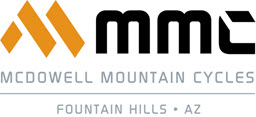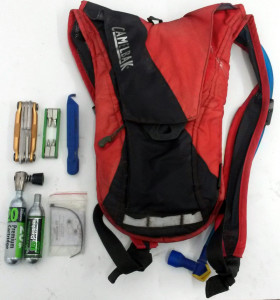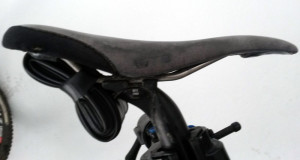Long races and rides are a great way to explore new trails, but what if something goes wrong with your bike and you become stranded? Here are a few tips on what to pack, and what to do when trouble occurs.
Always be prepared
Better to have what you need and never need to use it than be stranded with a flat tire or broken chain in the middle of nowhere with no cell phone reception. Whether it’s on the road bike or the mountain bike (long ride or short), it’s always best to have what you need.
When it comes to racing, weight savings is of the essence. Here are the essentials I pack with me on the mountain bike.
- Hydration Pack – I carry a 50 oz hydration pack most of the time as I’ve found that is good for up to 3-hours in 80 degree weather along with one bottle on the bike. Water in the pack, and drink mix in the water bottle. I mix my bottle a little on the heavy side and take small sips.
- Flat Kit – I carry a CO2 inflater head along with 2 CO2 cartridges. When running tubeless tires, it’s best to first try and inflate the tire without the tube and see if it holds. If it does not, or if you get rolling and proceed to loose air or flat again, you now have a second CO2 to inflate the tube.
- Multi-tool – A small multi-tool is a must. A Phillips head screwdriver along with an few Allen (also called Hex) heads are most common. It’s important to know what kind of bolts your bike has. More and more newer bikes are coming with Torx (also referred to as Star) bolts. Make sure you have the right heads on your multi-tool.
- Misc Parts – A quick link and a zip tie always come in handy when you least expect it. They’re small and light. Without them you may be stuck walking.
A saddle bag and water bottles can be substituted for a hydration pack, just plan your water stops so you don’t get stranded too far from the nearest gas station.
For the road bike I carry a frame pump. I prefer the frame pump over the pocket size pump because the longer handle gives me extra leverage making it easier to get the road tire to the higher PSI required. It takes a little longer to inflate a tube this way, but I never have to worry about running out of CO2 cartridges.
Where is the Best Place to Put My Spare Tube?
I like to place my tube underneath my saddle with a piece of electrical tape. This keeps it tight to the bike and I always have it with me. On the road bike I keep 2 tubes in my saddle bag. I like to carry 2 tubes on the road bike because if I flat, I’m now out of tubes. Having the second tube as a backup gives me the comfort of being able to continue my ride knowing I still have a spare.
Additional Tips
Hydration – Rule of thumb is to drink one bottle per hour and have one piece of food per hour. Cooler temperatures yield less water. The best time to hydrate are the hours leading up to your ride, and immediately following. The idea here is to go into your ride “topped off” not thirsty or hungry, but not with an overly full stomach.
Real Food vs. Packaged – The longer and slower the ride the more real food to bring. The shorter and harder the effort, the more the body relies on quick carb sources like hydration mix and gels.
Conclusion
So there you have it! Just like your race day gear bag, once you pack what you need you can have it ready to go for every ride and you never have to worry about forgetting anything. Before each ride all I have to do is check my tire pressure (and shock pressure for the mtb), grab my hydration pack and I’m off.
Having confidence when riding is just as important as having fitness, so if you’re unfamiliar with how to fix a flat ask a friend who knows how, and always be sure to have the proper tools on you while you’re riding.


